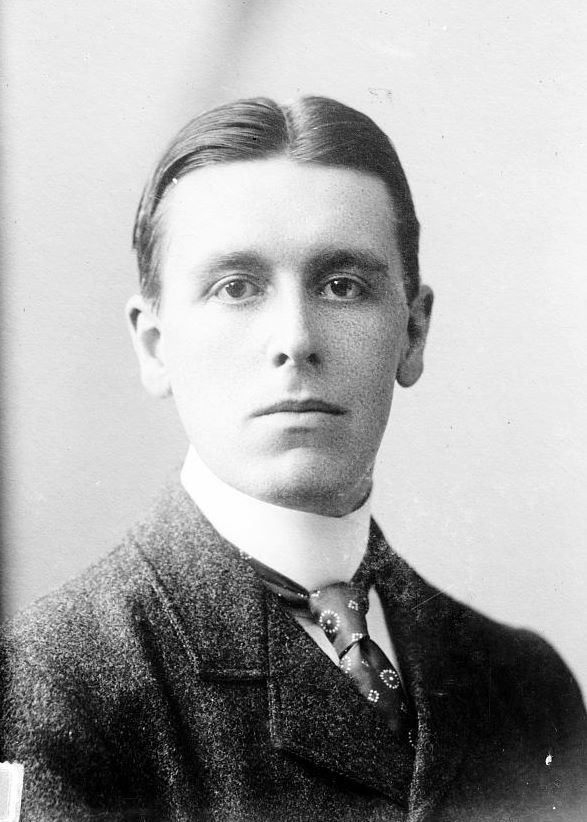Known for Seabury Commission Died May 7, 1958, East Hampton Religion Episcopalian Spouse Maud Richey (m. 1900) | Name Samuel Seabury Role Judge | |
 | ||
Occupation Judge, attorney, politician Books The Investigation of the Magistrates' Courts in the First Judicial Department and the Magistrates Thereof, and of the Attorneys-at-law Practicing in Said Courts: Final Report of Samuel Seabury, Referee. Supreme Court, Appellate DivisionFirst Judicial Department Parents Alice Van Wyck Beare, William Jones Seabury | ||
Samuel Seabury (February 22, 1873 – May 7, 1958) was an American lawyer and politician from New York. Seabury is famous for dedicating himself to a campaign against the corrupt Tammany dominance of New York City politics. He later presided over the extensive 1930–32 investigations of corruption in the New York City municipal government, which became known as the 'Seabury Hearings'. Seabury became a Georgist after reading Progress and Poverty.
Contents

Family
A descendant of several Anglican priests (including the first Episcopal bishop, Samuel Seabury, whose portrait later hung over the fireplace in his library), this Samuel Seabury was the son of William Jones Seabury, professor of canon law (and himself the son of theologian Samuel Seabury), and Alice Van Wyck Beare. On June 6, 1900, this Sam Seabury married Maud Richey (d. 1950), but they never had children.
Legal and Judicial Career
Seabury graduated from New York Law School in 1893, and was admitted to the bar in 1894. In 1899, he ran on the Independent Labor, Republican, and other minor parties', tickets for the New York City Court but was defeated by the Tammany Hall candidate. In 1901, Seabury ran again for the City Court, this time on the Citizens Union ticket, and was elected to a ten-year term.
In 1905, Seabury ran for the New York Supreme Court (actually a trial court) on the Municipal Ownership League ticket headed by William Randolph Hearst for Mayor, but was defeated. In 1906, he ran again, this time on the Democratic and Independence League fusion ticket headed by Hearst for Governor, and was elected to a fourteen-year term.
In 1913, Seabury ran on the Progressive ticket for the New York Court of Appeals, the state's highest court, but was defeated. The following year, he ran again, this time on the Democratic, Progressive, Independence League, and American tickets, and was elected to a fourteen-year term, becoming the only Democrat elected that year. On December 8, 1914, Seabury was appointed to the Court of Appeals three weeks before his elective term would begin, to fill the vacancy caused by the death of William B. Hornblower.
In 1916, the Democrats nominated Seabury for Governor of New York. He resigned from the bench believing that the Progressive Party would nominate him too, based on what he thought were promises by Theodore Roosevelt. The Progressives, however, endorsed Republican incumbent Charles S. Whitman after Roosevelt told them that "no Progressive should vote for Seabury." Seabury supposedly responded by calling Roosevelt a "blatherskite" to his face. Whitman defeated Seabury.
Seabury then resumed his private law practice. Active in the New York City Bar Association with William Nelson Cromwell, Seabury succeeded Cromwell as that organization's president from 1939–1941.
In 1930–1932, Seabury became lead investigator of the Hofstadter Committee (sometimes called the Seabury Investigations), a joint legislative committee which investigated corruption in New York's municipal courts and police department and called over a thousand witnesses. Those investigations forced Jimmy Walker out of the office of Mayor of New York City. In 1950, Seabury published The New Federalism, expressing doubts about increasing governmental power.
Death and legacy
An invalid for several years, Seabury died at Hand's Nursing Home in East Hampton. He was buried in the graveyard of Trinity Church (Manhattan).
A park was named to honor Judge Seabury. On the corner of 96th street and Lexington Avenue, it was renovated in 2005–2006.
